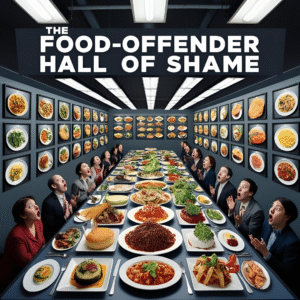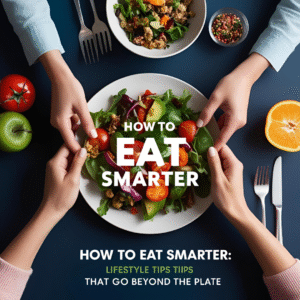Foods Bad for Acid Reflux
Foods Bad for Acid Reflux: What to Avoid for a Happier Gut
Foods Bad for Acid Reflux If you’ve ever experienced a burning sensation rising from your stomach into your chest or throat, you’re not alone. Acid reflux—commonly called heartburn—is one of the most widespread digestive issues people deal with today. And while the occasional episode might not be a big deal, chronic acid reflux, or gastroesophageal reflux disease (GERD), can really affect your quality of life.
We’ve all been there—enjoying a delicious meal only to be hit with that telltale discomfort a few hours later. As it turns out, what you eat plays a massive role in triggering or preventing acid reflux. And yes, while it’s frustrating to think your favorite foods might be to blame, understanding the culprits is the first step toward feeling better.
Let’s dive into the worst foods for acid reflux, explore why they cause issues, and discover practical tips to help you make smarter choices without feeling deprived.
What Is Acid Reflux, Anyway?
Before we jump into the food list, it’s important to understand what’s going on in your body. Acid reflux occurs when the lower esophageal sphincter (LES)—a small ring of muscle that acts as a gate between your stomach and esophagus—fails to close properly. When that happens, stomach acid can flow back up into the esophagus, causing irritation and the classic “burning” sensation.
Over time, repeated exposure to acid can lead to inflammation, ulcers, or even precancerous changes in the esophagus. That’s why managing reflux isn’t just about comfort—it’s also about long-term health.
The Food-Offender Hall of Shame
1. Fried and Fatty Foods
This one’s a heartbreaker—especially if you love French fries, fried chicken, or those crispy onion rings.
Why they’re bad: High-fat foods slow down digestion and can weaken the LES. When food sits in your stomach longer, it increases pressure and makes it more likely for acid to push up into your esophagus.
Common culprits:
- Fried chicken
- Fast food burgers
- Potato chips
- Sausages and fatty cuts of meat
Tip: Swap deep-fried options for baked, grilled, or air-fried versions. Your stomach (and arteries) will thank you.
2. Tomatoes and Tomato-Based Sauces
This one stings for pasta lovers and pizza enthusiasts.
Why they’re bad: Tomatoes are naturally acidic. Whether it’s a fresh tomato, tomato sauce, or ketchup, these foods can irritate the esophageal lining and trigger reflux symptoms.
Common culprits:
- Spaghetti with marinara sauce
- Pizza
- Salsa
- Ketchup
Tip: Try cream-based sauces or olive oil with herbs like basil and oregano for flavor without the burn.
3. Citrus Fruits and Juices
Citrus fruits are loaded with vitamins and taste like sunshine—but they’re also highly acidic.
Why they’re bad: Oranges, lemons, limes, and grapefruits can directly irritate the esophagus and make existing acid reflux worse.
Common culprits:
- Orange juice
- Lemon water (yes, even the trendy detox version)
- Grapefruit
- Pineapple (though technically not citrus, it’s similarly acidic)
Tip: Opt for lower-acid fruits like bananas, melons, or apples (except Granny Smiths, which are more acidic).
4. Spicy Foods
Some people crave that fiery kick in their meals—but for reflux sufferers, spicy food is like gasoline on a fire.
Why they’re bad: Spicy foods can irritate the stomach lining and loosen the LES. They also often lead to increased acid production.
Common culprits:
- Hot peppers
- Chili powder
- Curry
- Sriracha and other hot sauces
Tip: Use herbs like turmeric, ginger, and cumin for flavor without the flare-up.
5. Chocolate
This might be the toughest one to give up. Chocolate isn’t just delicious—it’s a comfort food. But unfortunately, it’s also a triple threat.
Why it’s bad:
- Contains caffeine, which can trigger reflux.
- Contains theobromine, which relaxes the LES.
- Often high in fat.
Tip: Try carob as a chocolate alternative, or opt for a small amount of dark chocolate (with 70% cacao or higher) to reduce sugar and fat.
6. Caffeinated Beverages
Coffee, soda, and even some teas can worsen reflux symptoms.
Why they’re bad: Caffeine relaxes the LES and increases stomach acid production. Plus, carbonated drinks add pressure, making it easier for acid to sneak upward.
Common culprits:
- Coffee
- Energy drinks
- Cola
- Black tea
Tip: Switch to herbal teas like chamomile, ginger, or licorice root. Decaf coffee is better—but still acidic, so moderation is key.
7. Alcohol
We’re not saying you can never enjoy a glass of wine, but alcohol is a known reflux trigger.
Why it’s bad:
- Relaxes the LES.
- Stimulates acid production.
- Can cause direct irritation to the esophagus.
Common culprits:
- Red and white wine
- Beer
- Spirits, especially mixed with citrus or soda
Tip: Drink in moderation and never on an empty stomach. Try drinking water between alcoholic beverages, and avoid lying down soon after drinking.
8. Onions and Garlic
These two flavor powerhouses are staples in many dishes—but they can spell trouble for sensitive stomachs.
Why they’re bad: Onions and garlic (especially raw) can relax the LES and increase stomach acid production. They also cause bloating, which adds pressure on the stomach.
Common culprits:
- Raw onion in salads or sandwiches
- Garlic-heavy sauces
- Onion rings (double trouble—fried and onion)
Tip: Cook onions and garlic well, or use onion/garlic-infused oil for flavor without the reflux punch.
9. Peppermint
This one surprises a lot of people. Peppermint is often used to aid digestion, but it can backfire when it comes to acid reflux.
Why it’s bad: Peppermint relaxes the LES, making it easier for acid to sneak into the esophagus.
Common culprits:
- Peppermint tea
- Breath mints
- Chewing gum with peppermint flavor
Tip: Switch to ginger or chamomile for a more reflux-friendly digestive aid.
10. Dairy (for Some People)
While not everyone with acid reflux is sensitive to dairy, full-fat versions can be problematic.
Why it’s bad: High-fat dairy products, like whole milk, cream, and certain cheeses, can slow digestion and weaken the LES.
Common culprits:
- Ice cream
- Whole milk
- Sour cream
- Cheddar and cream cheese
Tip: Choose low-fat or plant-based alternatives like almond milk or oat yogurt, but always check for added sugars or thickeners.
How to Eat Smarter: Lifestyle Tips That Go Beyond the Plate
It’s not just what you eat—it’s how and when you eat that matters too. These lifestyle tweaks can make a world of difference:
- Eat smaller meals: Large meals stretch the stomach and increase pressure on the LES.
- Avoid lying down after eating: Give your body 2–3 hours to digest before reclining or going to bed.
- Elevate your head while sleeping: Use a wedge pillow or raise the head of your bed to keep acid from traveling upward.
- Chew slowly and mindfully: Digestion starts in the mouth. Eating too fast can trigger reflux.
- Wear loose clothing: Tight waistbands can compress the stomach and force acid upward.
Don’t Worry—You Still Have Delicious Options
Now that we’ve covered the offenders, you might be wondering: What’s left to eat?
Plenty, actually! Here are some reflux-friendly foods you can enjoy:
- Oatmeal
- Bananas and melons
- Lean proteins like turkey, chicken, and fish
- Green vegetables (spinach, kale, broccoli)
- Whole grains (brown rice, quinoa)
- Root vegetables (sweet potatoes, carrots)
- Herbal teas (ginger, chamomile, licorice root)
Final Thoughts:
Living with Foods Bad for Acid Reflux doesn’t mean you have to live in fear of every bite. It’s about learning what your body can handle and making conscious choices to avoid discomfort. Start by identifying your personal triggers, keep a food diary if needed, and don’t hesitate to experiment with substitutions.
Remember, food is meant to be enjoyed—not feared. By avoiding the common culprits and embracing a more gut-friendly lifestyle, you’ll be well on your way to soothing your stomach and reclaiming your plate.
Your gut—and your sleep—will thank you.



Interesting read! The push for faster, more secure gaming experiences is key. Seeing platforms like 888phl slot download leverage AI & biometric verification is a smart move – instant access is the future, right? Definitely a tech evolution!
60hh7r
Interesting points! Player verification is key for secure platforms – seen it firsthand. Exploring options like jljl glory casino & their app download process highlights that focus. Vigilance is always smart in this space! 🛡️
Basic strategy’s all about minimizing losses, right? Seeing platforms like jilibay online casino offer quick registration & secure payments (GCash is key!) makes the game more accessible. Smart move for Filipino players! 👍
Scratch cards are such a fun, quick thrill! I’ve been checking out different online platforms, and legend link log in seems legit with easy maya deposits – a big plus for Filipino players! Hoping for some legendary wins soon! ✨